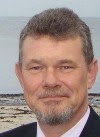
Scotland will join European leaders in developing innovative transport initiatives to encourage more Scots out of their cars.
Announcing the award of funding to seven successful towns and cities,
Transport and Climate Change Minister Stewart Stevenson said the Sustainable Travel Demonstration Communities project would showcase a range of transport initiatives that would be good for people's pockets, their health, their communities and the planet.
Initiatives will include proposals for the first self service bike rental schemes anywhere in the UK as well as more targeted transport advice to commuters.
Bike rental schemes, based on successful models in Paris, Barcelona and Stockholm will allow people in Dumfries and Dundee to pick up a bike at a rail or bus station, use it for free for half an hour, and then pay a rental fee at an hourly rate thereafter. Once finished, the bike could then be deposited at any one of a number of other interchanges across towns and cities.
Stewart Stevenson said:
"With more cars on our roads, increasing levels of congestion and rising emissions, it is time for us all to look at our travel behaviour.
"We need to look at new ways of persuading people out of their cars and onto more sustainable forms of travel such as trains, buses, walking and cycling.
"The proposals from local authorities and regional transport partnerships have been impressive and the seven communities selected now have the chance to improve travel options for thousands of residents.
"Initiatives like the bike rental schemes, the development of park and choose sites, more pedestrian-only areas, and free trial bus and train tickets will help us to meet our ambitious climate change target - to reduce Scottish emissions by 80 per cent by 2050.
"These proposals will help to promote healthier travel choices too, providing more opportunities for cycling and walking, allowing more people to enjoy the benefits of increased physical activity.
"These schemes will make a real difference, making transport choices cheaper, healthier, safer and greener.
"We look forward to the lessons learned from this project being used as a template for other local authorities, showcasing the very best of sustainable travel initiatives. It could result in a catalyst for change right across Scotland."
Barrhead, Kirkwall, Dumfries, Dundee, Kirkintilloch/Lenzie, Larbert/Stenhousemuir and Glasgow East End will now use £15 million of funding to develop a wide range of initiatives such as personalised travel planning, the building of more pedestrianised zones, free trial bus and rail passes and the development of better walking and cycling routes to encourage their residents to use greener forms of travel.
COSLA's Vice President Councillor Corrie McChord said:
"COSLA is happy to be involved in this project. It helps both councils and the Scottish Government to meet a number of aspirations we share with the Scottish people. We have far too many short journeys being undertaken, nearly three in five car journeys are for trips of less than three miles.
"Where councils are involved in this initiative local people will be able to see the advantages of intensive sustainable travel initiatives. They will see the benefits of increased active travel in the form of walking and cycling, decreased local car use and emissions, reduced congestion, and improvements to their local neighbourhoods over time.
"One of the less direct but equally important benefits of this project is that it will provide information and experience useful to other councils in preparing similar schemes over the coming years. This project will allow participating local authorities to address these issues with a significant amount of resource and support."
The Scottish Government and seven Local Authorities will have a budget of £15 million to spend on sustainable travel initiatives. £10 million will be made available by the Scottish Government with a contribution of £5 million from the Local Authorities/SWESTRANS.
Similar schemes elsewhere have already led to impressive results. In Darlington, there has been a 14 per cent increase in public transport trips; 29 per cent increase in walking; 79 per cent increase in cycling and car journeys down by 11 per cent. The results have been achieved through simple measures such as improving cycle and walking routes, better public transport links, more pedestrian-only areas, travel advisors visiting homes providing tailored travel plans, car sharing schemes and even discounts on bus and train tickets.
There are currently three "Sustainable Travel Demonstration Towns" running in England - in Darlington, Peterborough and Worcester. These are already showing impressive results.
The Scottish Government asked for innovative ideas from Scottish Local Authorities within their expressions of interest. Amongst the actions from the seven successful authorities were:
- Individual Travel Marketing (sometimes known as Personalised Travel Planning or travel blending) which provides tailored travel information based on the needs of the household
- Self service bike rental interchanges
- Car sharing schemes
- 'Park and Choose initiatives'. Unlike conventional Park and Ride sites, these provide a wider choice set for potential users. This includes: bus, rail, cycling, and trip share - where people can book spaces for car share in one vehicle for onward travel
- Organised cycling and walking trips
- Discounted bicycles
- Free trial bus and train tickets encouraging residents to give it a try
- Infrastructure changes
- More pedestrian/cycle/walking only areas
- No car zones
- Improved conditions for walking, footpaths cleared of obstacles; better managed and maintained streets
- More cycle lanes and secure cycle parking
- Improvement of green space
- Better integrated access from rail and bus stations to key points in towns and cities
- Use of public spaces to increase opportunities for recreational physical activity
- Greater investment in public transport - improved bus services, facilities and better public transport information
- Maps explaining how to walk or cycle to a local shop, or even something as simple as a timetable for their nearest bus stop
School and work place travel plans
Scotland currently leads the UK in its approach to tackling climate change and the Scottish Government has set ambitious targets to reduce Scottish emissions by 80 per cent by 2050.
In Darlington, a team of travel advisors visited homes and offered travel information tailored to individuals, whilst collecting comments from residents about how their experience of local travel could be improved. The Local Council also found that even by simply giving residents free copies of the most up to date bus timetable led to increases in people switching from car to bus.
Improvements to cycle and walking paths to and from key points in towns have led to impressive increases in cycling and walking. One example from Peterborough saw the installation of high-tech cycle path improvements. New paths, linking in with rail stations, schools, hospitals and other public services, as well as key town landmarks have been installed. Mini-solar panels have even been installed allowing coloured solar lights to mark out paths across the city in early evening and through the night. These generate enough electricity to power the lights for three weeks, with sensors ensuring they only turn on at night.
 A review which is intended to consider enhancements to ferry services across all Scottish routes was confirmed today.
A review which is intended to consider enhancements to ferry services across all Scottish routes was confirmed today.

 Born in 1946 and brought up in Cupar, Fife, I was educated at the local school -
Born in 1946 and brought up in Cupar, Fife, I was educated at the local school - 



















